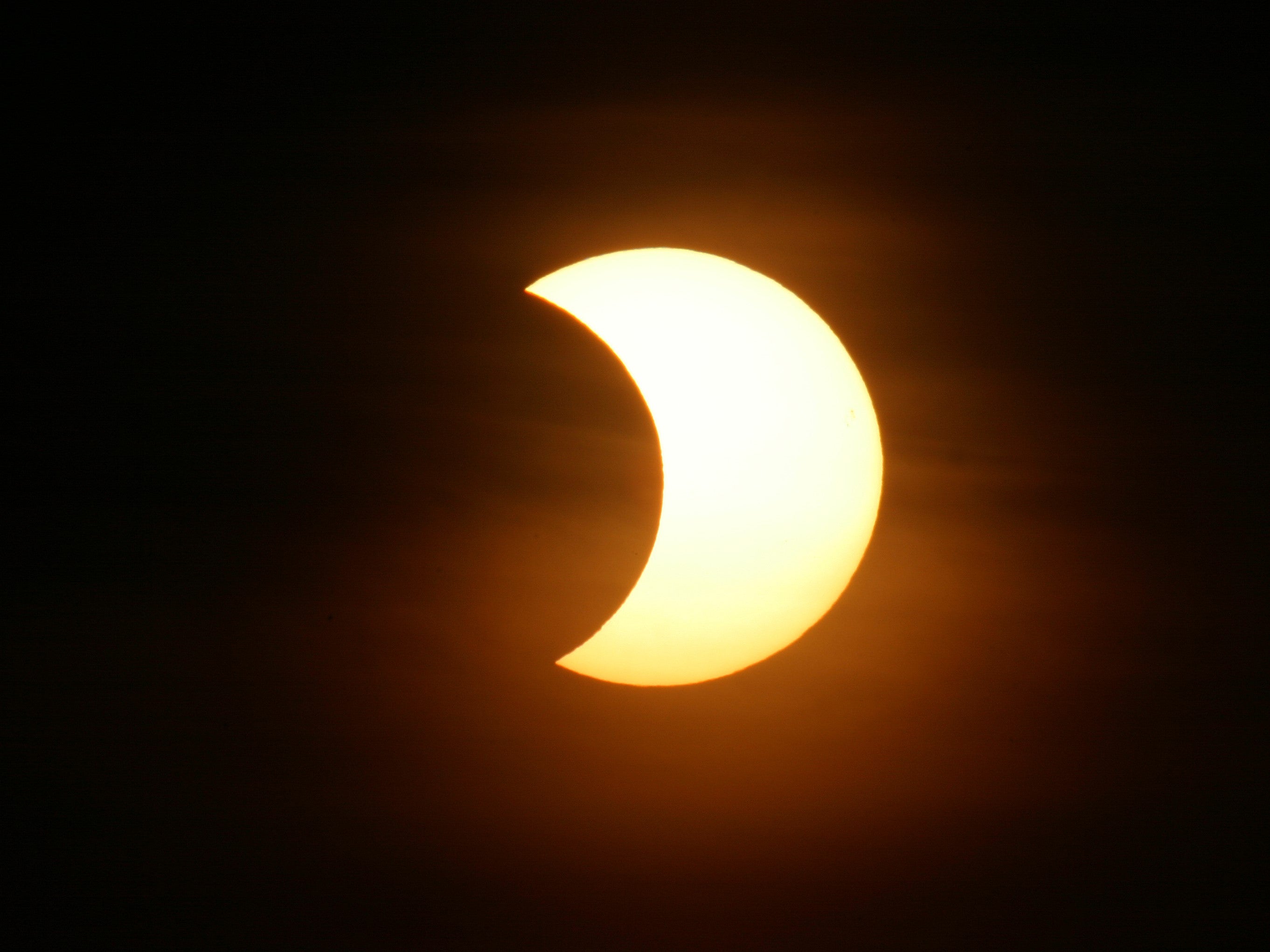Solar eclipse 2022: Time, duration and where in the world it’s visible
When the Moon passes in front of the Sun on Saturday, nearly two-thirds of our star’s diameter will be covered

Your support helps us to tell the story
From reproductive rights to climate change to Big Tech, The Independent is on the ground when the story is developing. Whether it's investigating the financials of Elon Musk's pro-Trump PAC or producing our latest documentary, 'The A Word', which shines a light on the American women fighting for reproductive rights, we know how important it is to parse out the facts from the messaging.
At such a critical moment in US history, we need reporters on the ground. Your donation allows us to keep sending journalists to speak to both sides of the story.
The Independent is trusted by Americans across the entire political spectrum. And unlike many other quality news outlets, we choose not to lock Americans out of our reporting and analysis with paywalls. We believe quality journalism should be available to everyone, paid for by those who can afford it.
Your support makes all the difference.The first solar eclipse of 2022 is set to take place this weekend, though it will only be visible in certain parts of the world.
The partial solar eclipse on 30 April will occur in one of the least populated areas of the planet, mostly across Antarctica, the South Pacific and Southern Oceans.
Several countries in South America will witness the celestial spectacle – including Argentina, Brazil, Bolivia, Chile, Paraguay, Peru and Uruguay – with the best land-based view located at a Chilean Antarctic research base on Doumer Island.
At this point, nearly two-thirds of the Sun’s diameter will be hidden by the Moon, as the Earth’s satellite passes in front of it.
The eclipse will begin just before sunset, when the Sun is low in the sky and sometimes visible without needing specialist viewing equipment. It will begin at 4.32pm in Santiago, Chile, and last for aproximately an hour and a half.
To watch the eclipse, people on the ground are advised to use solar filters like eclipse glasses, which protect both the dangerous brightness of the Sun and shield harmful UV rays.
“The only safe way to look directly at the uneclipsed, partially eclipsed, or annularly eclipsed Sun is through special-purpose solar filters, such as eclipse glasses,” the American Astronomical Society (AAS) advises in a blog post.
“Homemade filters or ordinary sunglasses, even very dark ones, are not safe for looking at the Sun; they transmit thousands of times too much sunlight.”
During a total eclipse, it is possible to stare straight at the Sun at the moment of totality, when the Moon completely covers the Sun and the sky becomes dark. This only lasts for a few seconds and it is an extremely rare occurrence.
The next total eclipse in Europe is not until12 August, 2026. The US will experience a total solar eclipse on 8 April, 2024.
Another way to safely view the eclipse is via pinhole projection.
“Cross the outstretched, slightly open fingers of one hand over the outstretched, slightly open fingers of the other, creating a waffle pattern,” the AAS explains. “With your back to the Sun, look at your hands’ shadow on the ground. The little spaces between your fingers will project a grid of small images on the ground, showing the Sun as a crescent during the partial phases of any solar eclipse or as a ring during the annular phase of an annular eclipse.
“Or just look at the shadow of a leafy tree during a partial or annular eclipse; you’ll see the ground dappled with crescent or ring-shaped Suns projected by the tiny spaces between the leaves.”
There will be one more partial solar eclipse this year, taking place on 25 October across large parts of Africa, Asia and Europe – including the UK.
On that date, the Moon’s shadow will cross in a south-easterly direction across Eurasia.

Join our commenting forum
Join thought-provoking conversations, follow other Independent readers and see their replies
Comments